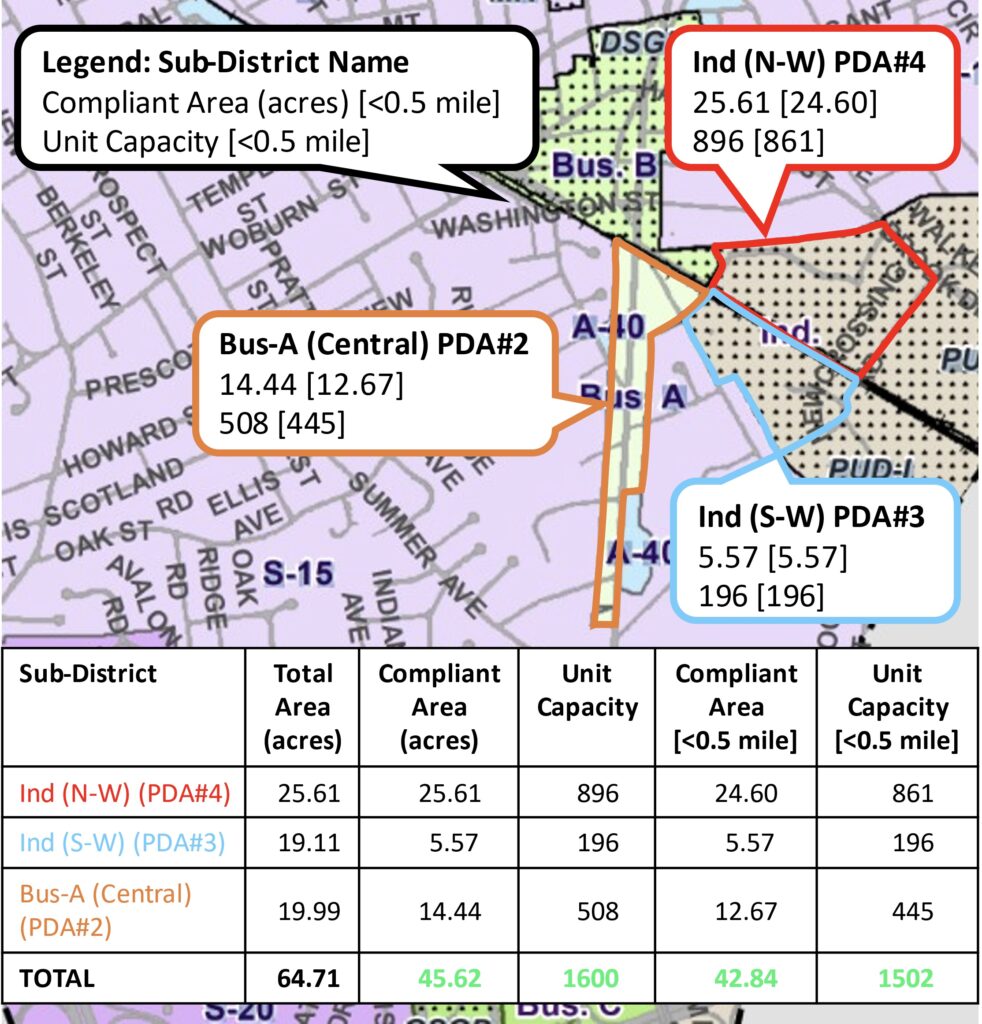
The Reading Post accepts Letters to the Editor. All letters must be signed. The Reading Post reserves the right to edit or not publish any letters received. Letters do not represent the views or opinions of the Post. editor@thereadingpost.com
Dear Town of Reading CPDC members,
We write in response to your interest in, and request for input regarding, a minimal Town of Reading plan to comply with MBTA Communities Legislation (as expressed during the CPDC Public Hearing of December 18, 2023). We note that this compliance goal is captured in the Town of Reading Housing Production Plan, 2023, (henceforth HPP23) as Development and Regulatory Strategy (henceforth DARS) 1 (p. 50). After listening to the feedback from the meeting on December 18, we set out to define a specific proposal that addressed the concerns raised by Reading residents.
We are confident this proposal realizes our goal of achieving MBTA Communities compliance while preserving Town of Reading’s character & maintaining flexibility for future responses to state initiatives. The 2005 Reading Master Plan speaks to town character: “The image of Reading as a peaceable, family-oriented, single-family suburban residential community remains a powerful, self-defining ideal, against which the Town’s citizens judge the quality of real conditions in the Town and the nature of changes to it.”
There exists a district defined by minimal zoning / overlay amendments (our proposal) that achieves compliance, reflects the community concerns expressed on December 18, and aligns with these objectives:
- Encourage additional development in underperforming / underutilized zones;
- Enhance existing zoning and minimize (or avoid) impact on existing single-family zones; and
- Ensure maintenance of adequate affordable housing inventory.
We have taken the community feedback from December 18, the CPDC’s request for community input on what a minimal compliance plan might look like, a thorough review of HPP23, and publicly available GIS data to define a workable solution. Our proposal uses overlays upon existing non-residential zones to address community concerns regarding the current Town Planning proposal and achieve minimal MBTA Communities compliance.
Our proposed overlay amendments would permit by right multi-family development with maximum unit density of 35 units / acre in three (3) Priority Development Areas (PDAs), as described in HPP23 DARS 2 (p. 50ff). The three PDAs included to achieve compliance are: #2 (as it overlaps with the current Bus-A zone immediately South of the railway line); #3 (extended East to New Crossing Road); and #4 (also extended East to New Crossing Road). The inset figure (see top of next page) highlights these PDAs / sub-districts overlaid on the Reading zoning map and tabulates sub-district contributions.
The by right multi-family district created by these amendments hosts a unit capacity of 1600 units (107% of Reading’s MBTA Communities required capacity), of which 1502 units fall within 0.5 miles of the Reading ‘Depot’ (251% of required capacity). Moreover, this district spans an area of at least 45.62 acres (106% of required area), of which at least 42.84 acres fall within 0.5 miles of the Reading ‘Depot’ (249% of required area). Based on these capacity and area estimates, this district has a gross unit density of approximately 35 units / acre (233% of required density) and locates 94% of capacity and 94% of area within 0.5 miles of the Reading Depot (235% respectively of required capacity and area proximity).

Addition of inclusionary zoning with a minimum percentage of affordable units required set at 15% to these amendments will promote achievement of HPP23 DARS 3 (p. 52) and DARS 10 (p. 56) to protect Reading’s hard won Safe Harbor designation.
Embracing this elegant, straightforward approach affords Reading multiple HPP23 strategic benefits through achievement of MBTA Communities compliance. Addressing four (4) of the twelve (12) HPP23 DARS (33%) conveys to Town Meeting a broad vision for HPP23 execution and realization and therefore enhances likelihood of approval and adoption.
Among the more notable strategic benefits are (1) that the zoning amendments guide developmental focus toward long-standing priorities that exhibit chronic underperformance / underutilization, (2) the district identified herein is contiguous, and (3) the district identified herein is contiguous with Reading’s DSGD. The latter, in particular, encompasses and encourages walkability throughout this desirably vital Reading hub.
Thank you for considering our input. We welcome questions and request an opportunity to present our proposal at the upcoming January 22, 2024 CPDC meeting.
Sincerely,
Boriana Milenova & Brad Rhodes (on behalf of many Reading residents)
Eaton Street, Reading
P.S.: We also consider it prudent that CPDC consider inclusion of by right multi-family development with maximum unit density of 20 units / acre for all existing A-40 and A-80 areas in the amendments supporting Reading’s MBTA Communities response.
